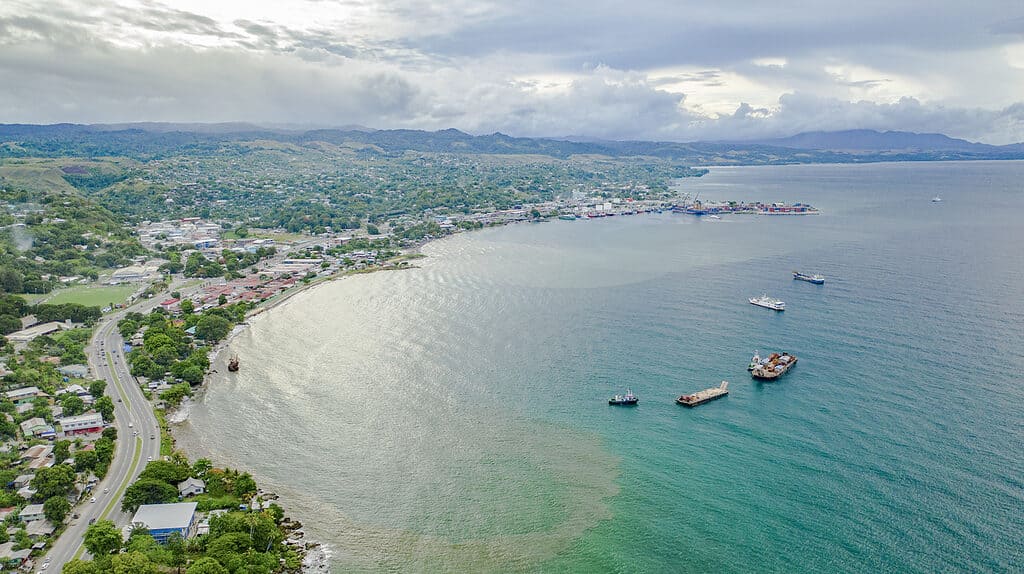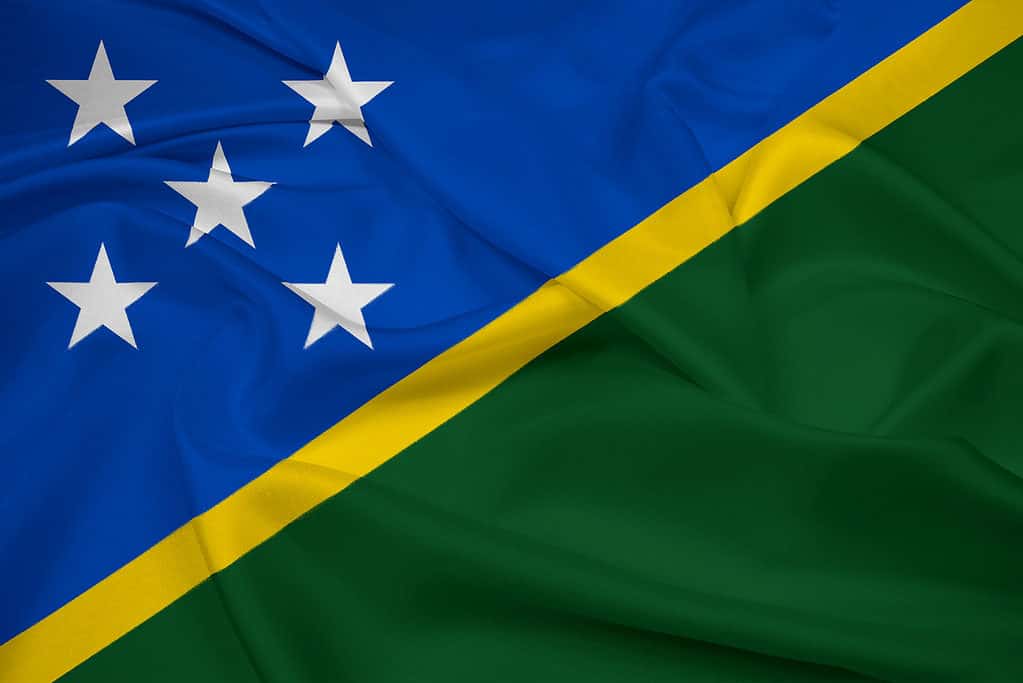The Solomon Islands is an island country belonging to a part of the South Pacific Ocean. The country is home to six primary islands and almost a thousand more scattered around Oceania. The country’s closest neighbors are Papua New Guinea to the west, Australia to the northeast, and Vanuatu to the southeast. The country is named after the larger region of the Solomon Islands (archipelago), a group of Melanesian islands. Álvaro de Mendaña, a Spanish adventurer, was the first European to observe the Solomon Islands archipelago in 1568, albeit he only named a few specific islands at the time. The islands were named Islas Salomón, meaning Solomons Islands. This name was in reference to King Solomon from the Bible and the wealthy city of Ophir, where he received shipments of gold and other valuable items every three years.
Although a part of a larger region, the islands that make up the Solomon Islands are all distinct and different from each other. Please keep reading this article to discover more interesting facts about the country and its people. This article will also provide information concerning the country’s flag- its history, symbolism, and meaning.
Solomon Islands: Geography and Climate
As previously noted, the Solomon Islands is an island country made up of approximately 900 smaller islands and six larger islands that are located east of Papua New Guinea. Most of the Solomon Islands’ territory is spread among many of the archipelago’s high, hilly islands. Some of the popular ones include the New Georgia Islands, Russell Islands, Choiseul, and Santa Isabel. The country also includes small ring-shaped islands such as Sikaiana. The largest island in the country by area is Guadalcanal, and it is also the second most populated island in the country after Malaita.
This particular island is also home to many mountains, including Mount Popomanaseu, which is the highest point in the Solomon Islands at 7,661 feet (2,335 m). The Solomon Islands are primarily mountainous, with some islands covered in rainforests. The Solomon Islands Rain Forests Ecoregion encompasses the majority of the islands, and the country’s forestry efforts primarily focus on preserving many of these forests. According to geology, the Solomon Islands are a part of the volcanic arc that stretches from Vanuatu to New Ireland in Papua New Guinea. The islands are volcanic, with five submerged volcanoes and at least ten resident stratovolcanoes. The volcanoes Tinakula, Savo, and Kavachi are all currently active. The other volcanoes are either just currently dormant or have gone completely extinct.
The country has a tropical oceanic climate, which is hot and humid but is moderated by calm winds and copious amounts of rain that fall all year round. Normal daytime temperatures range from 77 to 90 °F (25 to 32 °C), with nighttime lows of 37 to 41 °F (3 to 5 °C). Although there are no distinct seasons, the Southeast trade winds blow from April to October, and November to March is the rainy season. Typhoons, which are not often damaging, regular earth tremors, and volcanic activity are some of the natural hazards that affect the country. Other problems include deforestation and soil erosion.
Solomon Islands: Culture and Cuisine

Honiara is the largest city in Solomon Islands.
©iStock.com/Gilmore Tana
The Solomon Islands is home to over 700,000 inhabitants spread over a total land area of 28,400 square kilometers (11,000 sq mi). Although its most populated island is Malaita, its capital city, Honiara, is located on the second most populated island, Guadalcanal. Honiara is also the largest city in the country. Despite being an island country, the Solomon Islands does not receive as many tourists due to poor infrastructure and transportation limitations.
The country’s islands have been inhabited for thousands of years by natives, and the number of people living on these islands increased because of the migration of certain tribes. The first European entrance into the country occurred in the mid-16th century, led by Álvaro de Mendaña. He left the country but revisited it decades later, and by 1893, the British showed interest in the area and made it an administration. The country eventually gained its independence in 1978 and became a constitutional monarchy. Currently, the country is inhabited primarily by three ethnic groups – Melanesians, Polynesians, and Micronesians. Other notable groups of people that live in the country include Europeans and Chinese. Most of the population engages in subsistence farming, pig rearing, and fishing, and live in small rural settlements.
The Solomon Islands’ cuisine has evolved over thousands of years of occupancy and outside influences. Cattle were brought to the islands by the Spanish, and spices, exotic fruits, and vegetables were brought by the Asians. Since fishing and farming are the primary livelihoods of the residents, fish, and a variety of other fruits and vegetables, are common ingredients in the local cuisine. Additionally, baking, boiling, and frying are among the methods of cooking employed by the people of the nation.
Solomon Islands: Language and Religion
Despite the influence of several countries over the Solomon Islands, its official language is English. However, only around 2% of the country’s population speaks English fluently. The primary language used to communicate in the country is an English creole, Solomons Pijin. There are also around 70 other local languages spoken by the people of the Solomon Islands.
Over 90% of the country’s population is Christian, with the most practiced denominations being Anglicanism and Catholicism. Other Christian denominations practiced in the country are Jehovah’s Witness, the New Apostolic Church, etc. The other religions practiced by the people include Baháʼí Faith and Islam, while around 5% of the people live according to aboriginal beliefs.
History of the Flag of Solomon Islands

The flag of Solomon Islands was adopted in 1977.
©iStock.com/vistoff
The British Empire gave the Solomon Islands its first flag to serve as its national symbol. It had a dark blue field with the Union Jack in the canton and the colonial coat of arms on the fly, following the general design of the British Empire’s other flags. This coat of arms was composed of a white disc that encircled a shield that featured a British lion standing over other island-specific symbols. There was also the Blue Ensign of the British Empire with a defacement of the protectorate of the Solomon Islands name and a crown of the British monarch. By 1947, the British realized they needed to include a symbol for their nation – it was a crimson field with a black and white sea turtle charged on it. However, the use of this emblem was discontinued almost a decade later because it was established that the turtle was only affiliated with one of the country’s provinces. In 1956, it was changed to include a shield that was divided to include a lion, an eagle, weapons, a turtle, and a frigate bird.
In 1975, a competition to create a new flag for the future nation was organized before it gained independence. The country’s coat of arms was included in one of the submissions, although the initial winning design was a blue field with a yellow circle, encircled by chains, and charged with a black frigatebird. Eventually, this was overturned because it was determined that the bird was specific to one region rather than the entire nation. Apart from the winning design, the rest of the designs were considered controversial. The second design decided on was placed in the national newspaper, but it was also scrapped because it caused a lot of uproar from the citizens. The design eventually chosen was submitted by a New Zealander who worked in one of the county’s schools, even though the initial rules of the competition permitted the participation of locals only.
Flag of Solomon Islands: Meaning and Symbolism

The blue color on the flag of Solomon Islands represents the ocean that surrounds the islands.
©iStock.com/PromesaArtStudio
The flag of the Solomon Islands has a field of light blue and dark green that is divided by a diagonal yellow band that connects the flag’s lower hoist and upper-fly corners. This divides the flag into a blue upper triangle and a green lower triangle, and the canton is charged with five white stars. This flag was officially adopted in 1977, eight months before the country gained its independence.
The flag’s colors and symbolism have a variety of regional, political, and cultural connotations. The blue section of the flag which contains the stars represents the ocean that surrounds the islands, and other forms of water found on the islands, such as rivers. The green color alludes to the landscape and the plants, trees, and crops that occupy it, while the yellow represents the sun and the line drawn by its beams between the land and the sea. The white stars in the canton are arranged to form the shape of the letter X. These stars were included initially to represent the provinces of the country that were present at the time of its independence. However, after the country’s independence, more provinces were created, but the number of stars was not altered.
Up Next:
7 Countries with Green, Yellow, Red Flags
Different Flags That Feature People
26 Countries With Tricolor (Triband) Flags
The photo featured at the top of this post is © iStock.com/Niko_Cingaryuk
Thank you for reading! Have some feedback for us? Contact the AZ Animals editorial team.






